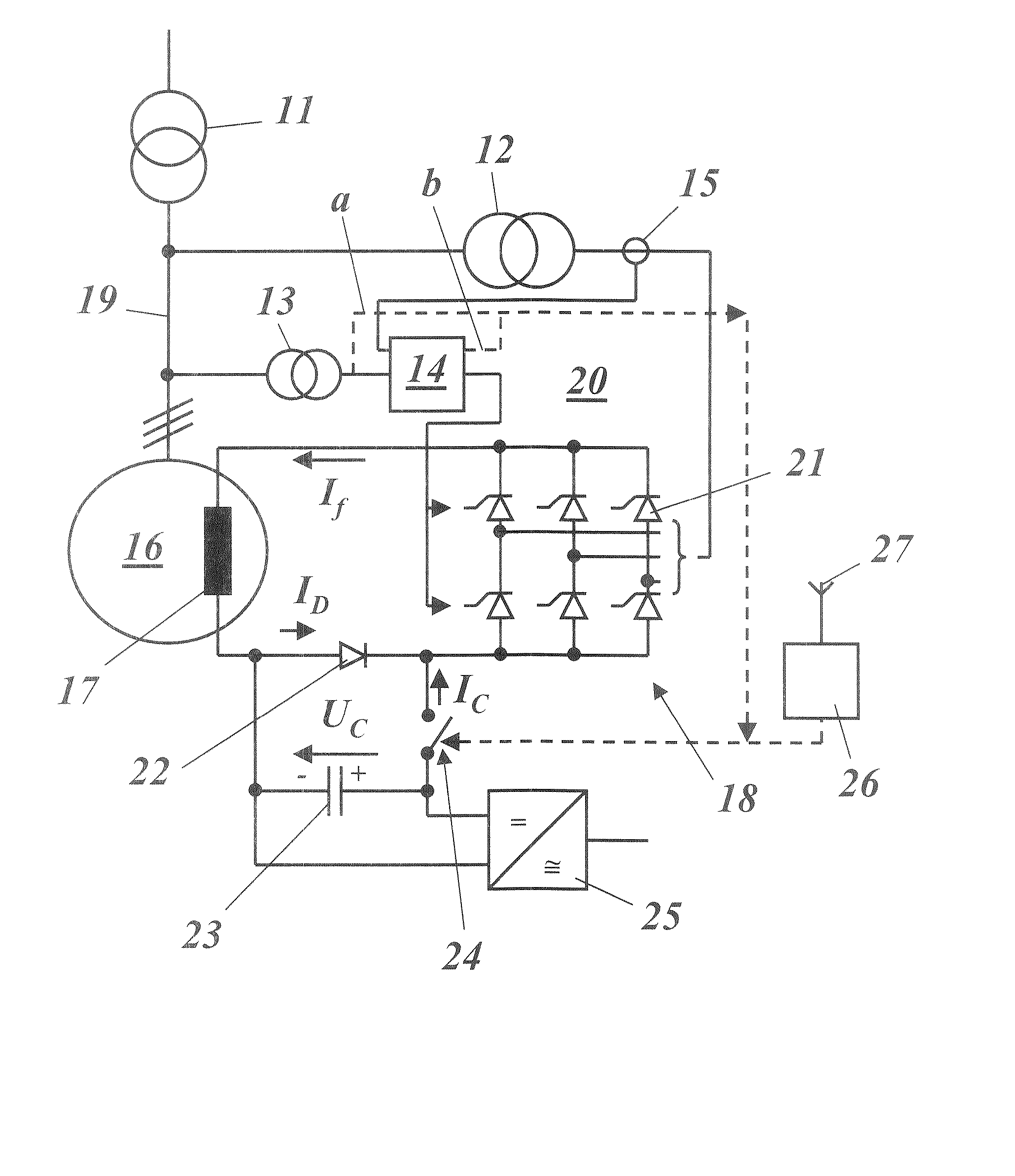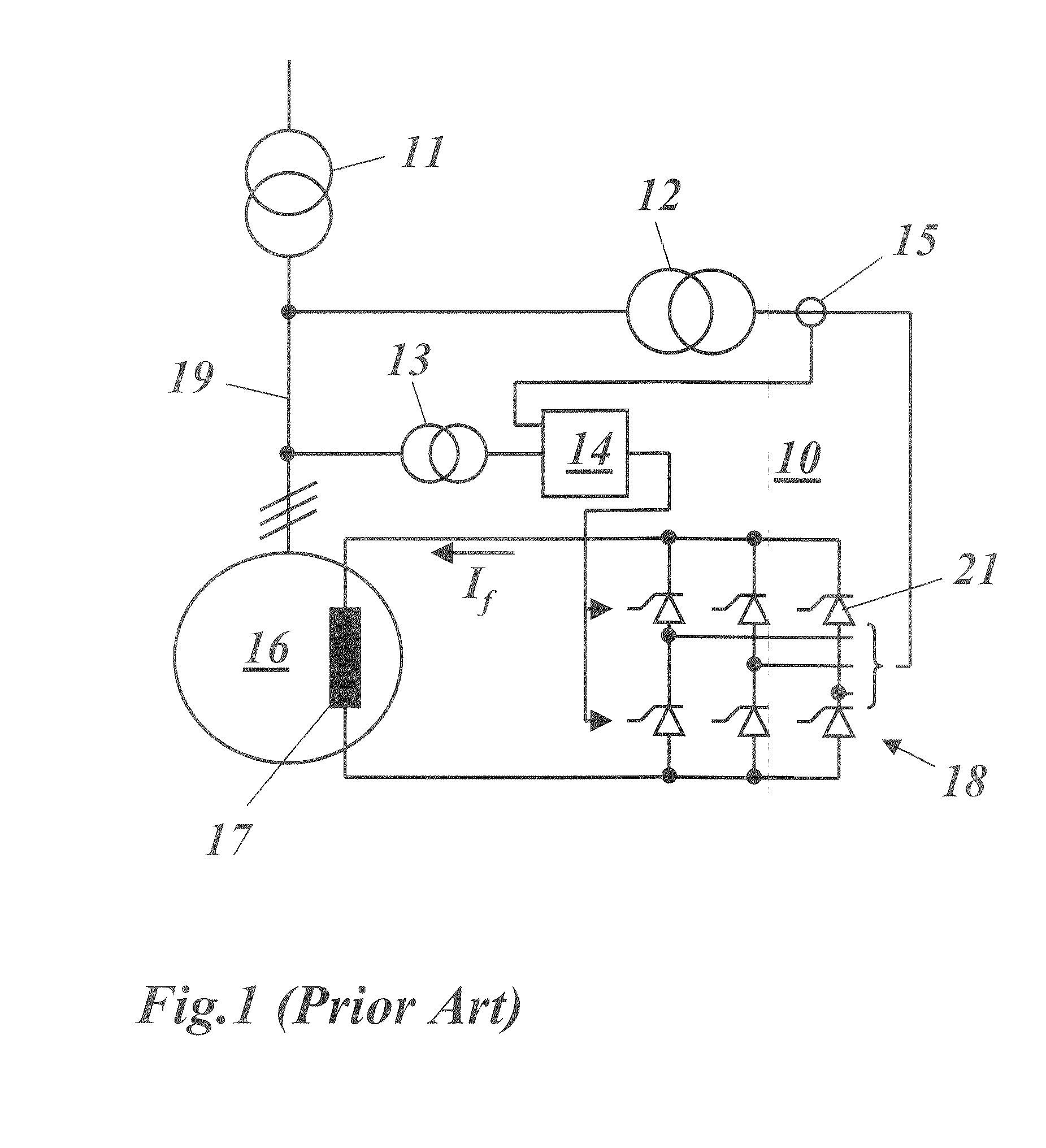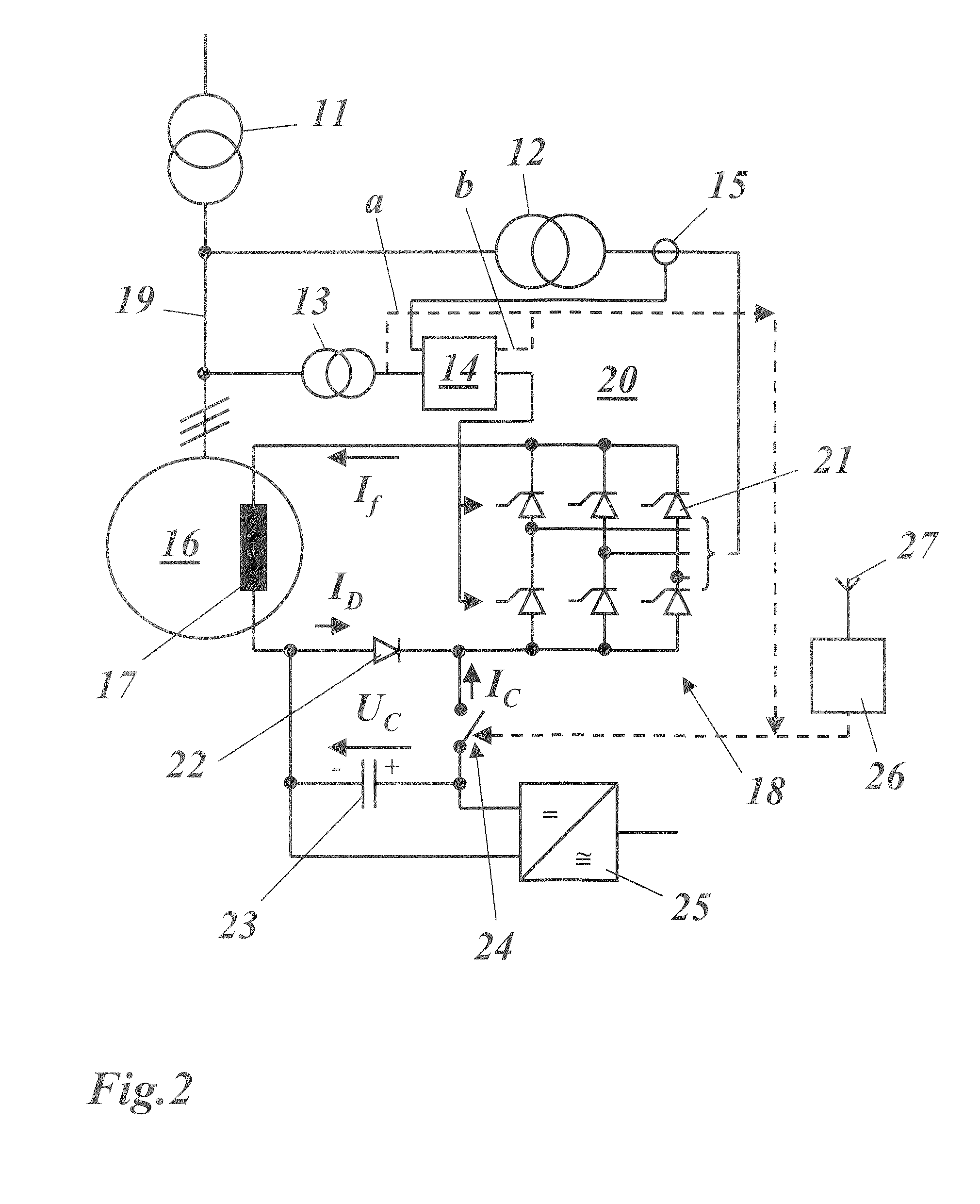Static Exciter System for a Generator and Method of Operation
- Summary
- Abstract
- Description
- Claims
- Application Information
AI Technical Summary
Benefits of technology
Problems solved by technology
Method used
Image
Examples
Embodiment Construction
[0026]FIG. 2 shows a simplified circuit diagram of a static exciter system according to a first exemplary embodiment of the invention. This is, once again, based on a generator 16 with a field winding 17, which is connected to a grid system via a busbar 19 and a machine transformer 11. The field winding is supplied with field current If from a static exciter system 20, which essentially includes an exciter transformer 12 followed by a thyristor bridge 18 which is fitted with thyristors 21. The thyristor bridge 18 is driven by an automatic voltage regulator (AVR) 14, which receives as input variables, on the one hand via a voltage transformer 13, the generator voltage applied to the busbar 19 and, on the other hand via a current transformer 15, the current flowing in the exciter system. The output side of the thyristor bridge 18 is connected to the field winding 17 and, together with it, forms an exciter circuit.
[0027] A diode 22 is installed in the forward-bias direction in the exc...
PUM
 Login to View More
Login to View More Abstract
Description
Claims
Application Information
 Login to View More
Login to View More - R&D Engineer
- R&D Manager
- IP Professional
- Industry Leading Data Capabilities
- Powerful AI technology
- Patent DNA Extraction
Browse by: Latest US Patents, China's latest patents, Technical Efficacy Thesaurus, Application Domain, Technology Topic, Popular Technical Reports.
© 2024 PatSnap. All rights reserved.Legal|Privacy policy|Modern Slavery Act Transparency Statement|Sitemap|About US| Contact US: help@patsnap.com










